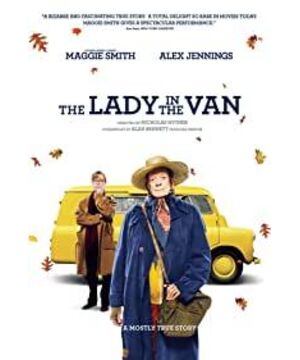The scene at the beginning of the film is the most commonly used scene in British and American films. The wide scene is prone to reverie the subsequent plot. The setting of the blunt car accident link conflicts with the plot in which the police reveal that Mary is a fugitive at the end, which overlaps slightly.
The portrayal of the "dual nature" of the people in the community is one of the highlights of this film. The part where you can watch the opera but rant about Mary makes people continue to reflect on the problem of the inability to cultivate high quality under a good life; The education method of "We will be stinky without money" has criticized the British people's selfishness, narrowness and profiteering to a certain extent. Like the arrangement of cleaning agents behind the Virgin Mary and blackmail by the police, this screenwriter with Western humor also makes people think. There are relatively few descriptions of Mary's family environment, but one can still feel the director's disappointment with the indifferent family members.
But it seems to be to calm the mood of the audience. A large number of plots are used to describe the details of the social worker helping Mary. It is a kind of petting the government. But since it is a value-oriented missionary film, this arrangement is reasonable, and it is often excellent art. Films, the main line of the mainstream must maintain the correct direction, and don’t use criticism.
The setting of religious links also gave the film a certain depth. A few classic lines, "good conduct or looking good conduct is the most selfish of all virtues, and in all likelihood is pure laziness." "The crime is just to deceive the innocent, but it turns out that this is what they are destined to do." In the end, the portrayal of Mary flying to heaven prevents the film from ending with "death", expressing the early stage Bennett and his help. Mary's blessing.
Another main thread of this film is Mary’s music dream. It can be said that when it comes to Western countries, music is a topic that cannot be avoided. It is also a common practice to use music as a concatenation. In fact, music in the film is only a symbol. It is more referring to Mary’s dream, or the dream of someone like Mary. She wants to tell people that the right to pursue dreams is equal, and no one can take it away. No matter how many setbacks you face in music or dreams, you may even feel disgusted when you hear music, but dreams are dreams, and they will not exist alone without being separated from the soul.
Because the music Mary can be put into the mental hospital, because the music Mary can constantly change the position of the truck, the reason is that music is the softest part of her and cannot be touched.
Because there are too many preaching links in the film, the audience is inevitably too depressed, so I arranged links like painting or playing in a wheelchair, and Xiang Mary feels that she is very clean, she does not need help from others, and even some language seems to be unnatural. , Let the film overflow with some enthusiasm and joy, so that the plot also has ups and downs.
Generally speaking, this film is successful. First, it chooses a true story, which can more impress the audience. Second, it chooses a writer’s perspective to tell it so that it will not make people disgusted with the preaching. The personalities that many directors are willing to express have been highlighted. Fourth, they can sort out some relatively sunny value systems so that the film can be rewarded after watching.
View more about The Lady in the Van reviews











